
River cruises have been around for a long time but they are all the rage right now. Maybe it’s the trend of seeking out smaller scale, more authentic, artisanal experiences. Or perhaps it’s that baby boomers, many retired and looking for hassle-free adventure travel, are taking another look.
Demand for river cruises continues to grow. An estimated 30 million travelers are expected to cruise this year. This is an increase of 6%, up from 28.2 million in 2018. Eighteen new ships have been ordered as well. So says Cruise Lines International Association’s (CLIA) 2019 State of the Cruise Industry Outlook.
Why are river cruises so popular?
One reason is the convenience of river cruising. Writing about her experience on a Uniworld cruise, the author confesses that “convenience and unique access are the two main reasons why I recommend river cruises. Unpacking once is a luxury most visitors to Europe know nothing about, but for me it’s a great reason to join a cruise. Settling into my cabin and having a home base, while still exploring different towns and cities is a luxury in its own right and shouldn’t be underestimated.”
River cruises tend to be cultural, experiential, educational, and scenic. As the CEO and founder of Viking River Cruises, Tor Hagen, states, “I like to say that ocean cruising is a drinking man’s cruise. River cruising is a thinking man’s cruise.”
How do you decide if river cruising is for you? Here are some things to consider before you book.
River cruises: a hassle-free way to see Europe for the first time
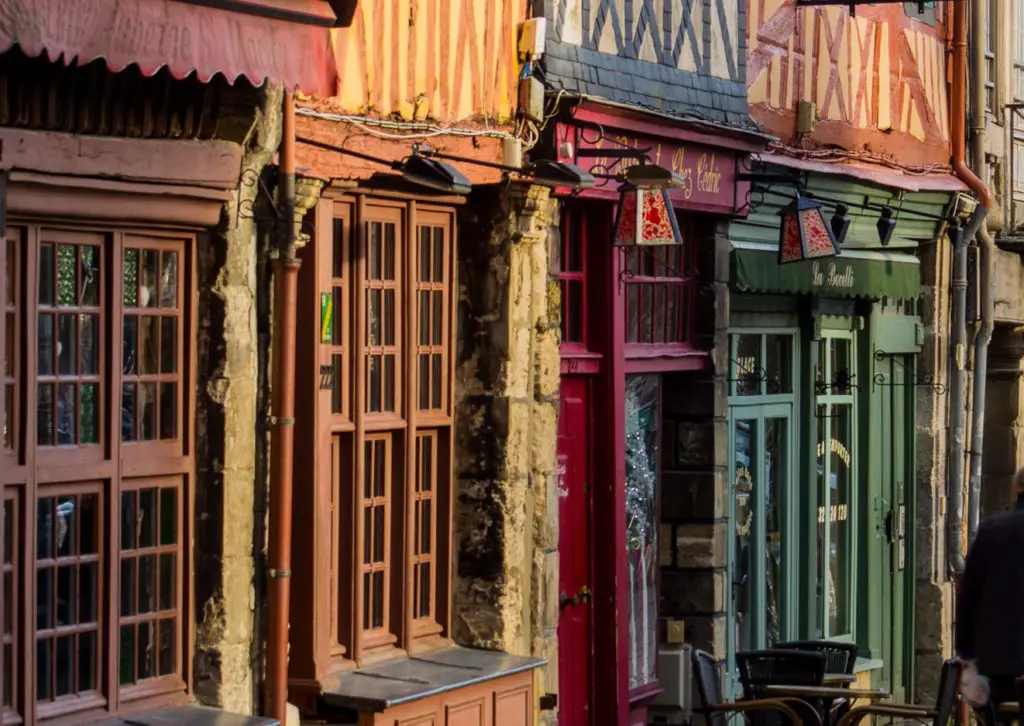
A river cruise may be just the ticket if you are not a seasoned traveler to Europe. Or if you want to see the highlights of a number of cities in a relatively short time. Or you are not inclined to do a lot of complicated planning.
A couple from New York City took a Seine River cruise to celebrate their 60th birthdays. “It was a perfect way to get a taste of both Paris and the French countryside.” They added, “and visit some important landmarks along the way.” Since both have demanding jobs they appreciated that everything was organized for them. There was no need to pack and unpack as they traveled and meals were excellent. They also enjoyed the opportunity to visit off-the-beaten-path places, like Rouen and Honfleur. That experience gave them a good sense of where to spend more time when they return to France.
But think beyond Europe
European river cruises are the most well-known—the most popular are the Danube; Rhine/Moselle/Main; Rhone/Saone; and the Seine. The major cruise lines also offer trips along waterways in Asia, including the Yangtze in China and the Kwai in Thailand. In North America you can cruise the Mississippi River in the U.S. and the Saint Lawrence River in Canada. Uniworld offers a 12-day voyage on the Nile in Egypt that takes in the Temple of Karnak, the world’s largest ancient religious complex, and the Valley of the Kings.
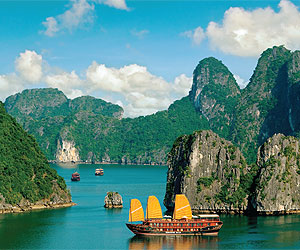
The best known European river boat cruise lines (AmaWaterways, A-ROSA, Avalon Waterways, CroisiEurope, Crystal, Grand Circle, Emerald Waterways, Scenic Cruises, Sea Cloud, Tauck, Uniworld and Viking). They offer a wide range of packages, depending on budget, length of trip and places to visit. Many of these lines also operate in Asia and Africa.
River cruises are ideal for the single traveler
“If I only had someone to travel with, I’d do it in a heartbeat.” Does this sound like you? Rick Kaplan, President of Premier River Cruises, one of the foremost travel agencies in North America for arranging river cruises, believes these people think that river boat travel will be too couples-oriented. Through working with thousands of solo travelers over the years, Kaplan believes there is no better vacation choice than the river cruise. Here’s why:
- River ships carry only about 150 passengers, so you meet everyone quickly.
- The environment is much more casual, social, and nurturing than on large ocean ships.
- Solo travelers make up about 7% of all passengers on European river cruises. They enjoy the benefits of being with other passengers who share similar ages and lifestyles and who love to travel.
- River cruisers tend to be a naturally warm and friendly group. They tend to look after one another so solo travelers find they are not ever really traveling alone.
- Open dining where no tables are assigned encourages everyone to socialize.

This woman was a convert after just one cruise
Janice Waugh, the founder of the Solo Traveler Blog, is one of the most widely quoted and respected solo travelers in the world. In the past she had avoided going on a river cruise. She assumed that it would be mainly for couples who would quickly join with other couples for meals and excursions. Premier River Cruises invited Janice to be the guest of Uniworld River Cruises and enjoy an illuminating holiday markets cruise from Vienna to Budapest. She became a convert. Although she still plans to take her budget-minded trips, she writes, “for people like me who want a holiday on occasion, leaving the work of travel to someone else is appealing.”
Mozart? Beer? Christmas? River cruises offer these (and other) themes
You can book a themed cruise to pursue special interests while you travel. Are you are passionate about classical music or the works of the Masters? Do you simply want to sample different European beers? There are cruises for each of these interests, and more.

With Tauck, you can walk in the footsteps of Mozart, Beethoven, Bartók, and Liszt on a 12-day trip. This includes a seven-night cruise on the Danube with an opera performance in Vienna and music-themed sightseeing throughout the cruise. If you can’t resist Christmas markets, Tauck and AmaWaterways host several cruises that visit towns on the Rhine and the Danube, famous for their holiday markets.
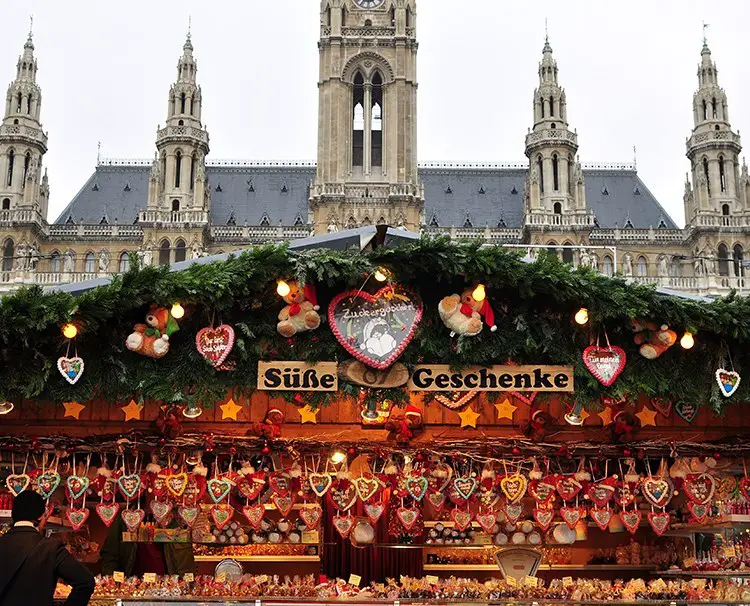
Imagine one of Vienna’s most splendid markets, complete with a twinkling tree glowing against the majestic Schönbrunn Palace. There you’ll find handmade gifts, Victorian-style sweets, candied fruits, traditional gingerbread and cookies, roasted chestnuts, and delicious pastries. You can also indulge in Christmas punch, mulled wine, piping hot waffles, crepes and sausages. To top it all off, remember to try the local specialty, Vanillekipferl—a light, crescent-shaped biscuit with icing, sugar, vanilla and almonds.
AmaWaterways’ Christmas Markets on the Danube cruise visits Vienna as well as Nuremburg, Regensburg, and Budapest. Their Christmas Markets on the Rhine cruise includes visits to Christmas markets in Cologne, Heidelberg, and Strasbourg.
For a taste of haute cuisine, Avalon offers a choice of culinary cruises through Europe. Their “Taste of Normandy” excursion includes a tasting of cheeses produced at a hillside farm; a pastry demonstration; special crêpes lunch; and food-and-wine-pairings.
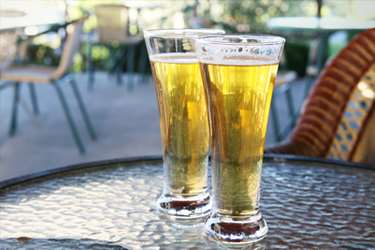
If European beers are more your speed, Avalon offers cruises along the Danube and through Holland and Belgium. You’ll enjoy lectures by local beer experts, on-board tastings, food and beer-pairings, pub crawls, and visits to family-owned breweries.
Many factors influence the price of a river cruise
With the boom in river cruises, the cruise lines have stepped up the number of packages on offer. Don’t expect to find the same bargain prices you’ll find on big ocean cruises. River cruises tend to be more exclusive and cater to a smaller number of people.
Destination. Europe is the most affordable destination. It averages between $200 and $500 per person, per night. France is the most expensive of the European destinations. Compare this with sailing on the Columbia and Snake rivers in the U.S., starting at $765 per person, per night. However, if you are starting from North America you will save some by taking a domestic instead of international flight. Asian river cruises can cost between $300 and $350 per person, per night, but often include overnight land components that are not included in the boat costs.
Time of year. Mid-May through late September are the most popular months for river cruises. You can expect prices to be about 15 to 20 percent higher than average. Prices drop during the hot months of July and August. But the best prices will be found in the shoulder season–late March and late fall–when temperatures are colder. Surprisingly, the Christmas market cruises in November and December are priced lower than those during any other time of the year—a gift in itself.
The most affordable time of year for an Asian cruise is between June and August. The price of Nile River cruises can fluctuate as much as 25% of the average $500 per person, per night, between the peak demand period between October and early January, and the hottest (and lowest cost) season between May and the end of September.
The outfit you sail with. Industry insiders designate Uniworld, Tauck, and Scenic as the “luxury lines,” with an average cost of $519 per night. However, those fees are often all-inclusive, including gratuities and airport transfers—and sometimes even airfare. AmaWaterways, Avalon Waterways, CroisiEurope, Emerald Waterways and Viking River Cruises are lower priced. They average less than $400 per night. Grand Circle, with its high-quality program directors and older ships, is the most affordable. A 16-day “Great Rivers of Europe” tour on Grand Circle is currently priced at around $250 per day.

Type of cabin. First, some terminology. Cabins are also called staterooms. They are the same thing, so don’t get confused. Also, all rooms are on the outside of the boat, which means everyone has a river view. But there is a difference. Riverview cabins have fixed windows and are at river level. They are the lowest-priced. Balcony rooms can
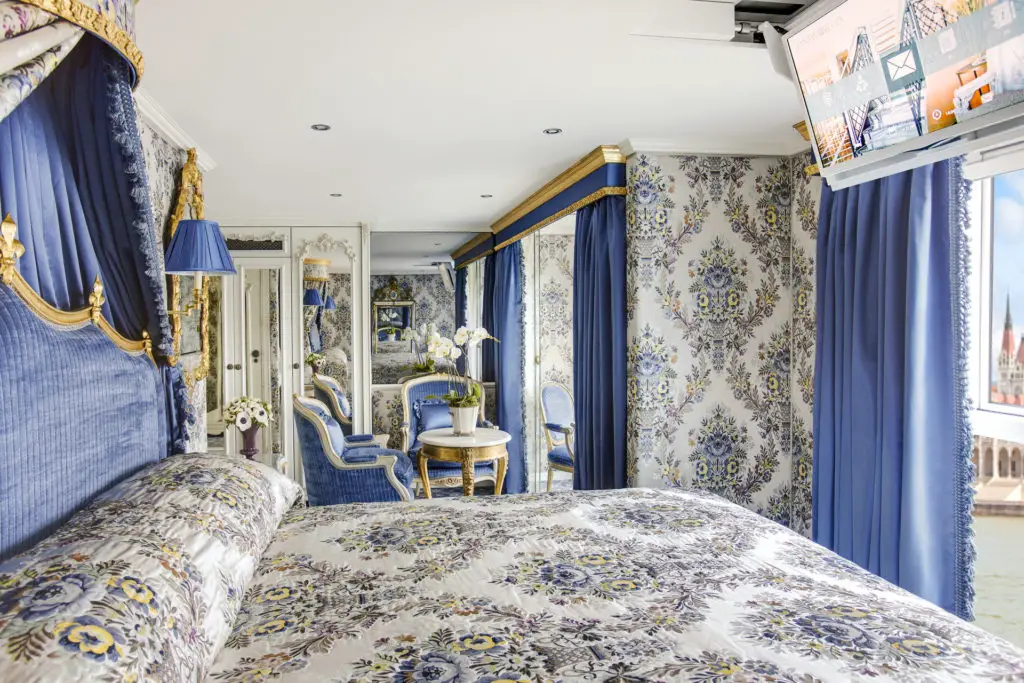
have French or full balcony. Suites, the most expensive rooms, can have French balconies and walkout verandas and usually are located on the upper levels.
Size of cabin. Cabin sizes on a river ship are limited by the narrow width—38 feet is the standard—that’s necessary to pass beneath bridges and through canals. The age of the ship also comes into play: Older vessels (generally built before 2009) are 361
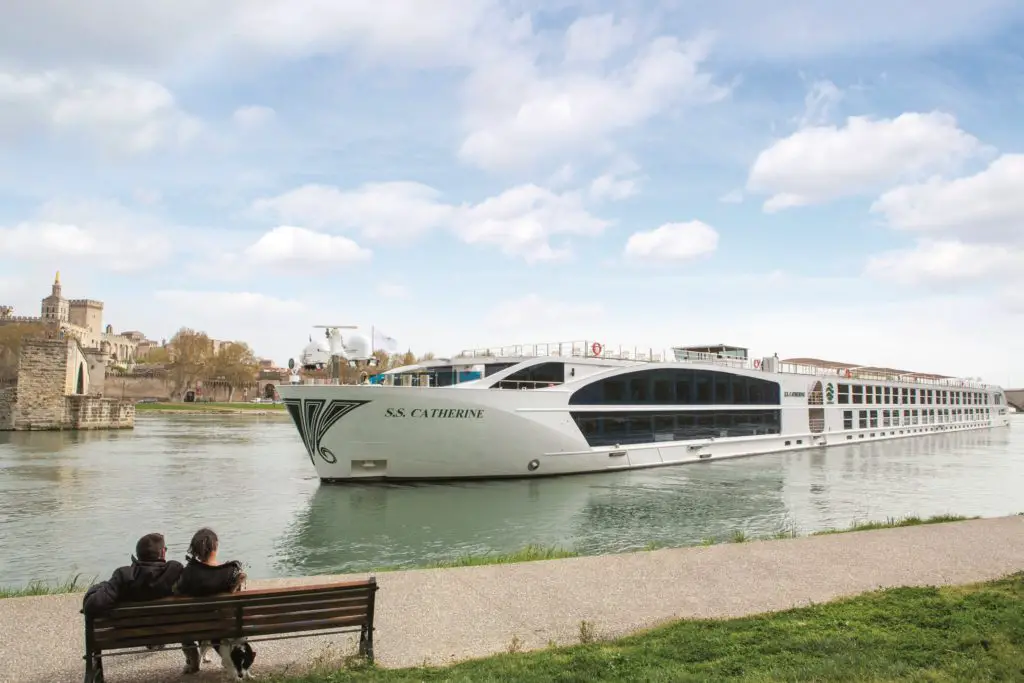
feet or less in length; more contemporary ships (generally built after 2010) can be 443 feet long. Lower cost staterooms (with a fixed window) range from 125–170 square feet in size, balcony staterooms between 160–250 square feet, and suites from 295–600 square feet.
Single supplement. River cruise companies regularly charge a single supplement of 50 to 100 percent for solo travelers who book cabins designed for double occupancy. But solo travel is becoming more popular so discounts or waivers are becoming more common.
If you decide to go it alone, Grand Circle is a friend to the solo traveler. They offer low cost ($545 to $995) single supplements, depending on the tour, and sometimes there is no extra fee. Some companies offer a “roommate” program, where a passenger is paired with another solo traveler, cancelling out the single supplement.
Is it better to book with a cruise line directly or use a travel agent?
The lines generally recommend that shoppers check out their websites and then consult travel agents. In many cases, the website will have a link to preferred travel agents within the shopper’s postal code. Grand Circle (friend of the solo traveler) only sells its cruises directly to consumers. The website CruiseCompete can help you get independent travel agencies to compete to offer you the best cruise deal.
River Cruise Prices: A Primer for the First Timer offers more insights into what you can expect on a river cruise.
There’s plenty to do in a typical day
Most land tours during a river cruise are included in the price of the trip. Since passengers have already paid for the activities, they usually try to make the most of them. To accommodate everyone, cruise lines are very flexible. You can choose excursions based on the pace you are comfortable walking and whether you prefer group or independent exploration.
For example, AmaWaterways has teamed up with Backroads, an active adventure biking, walking and hiking journeys company, to offer bespoke tours in each destination. If you don’t feel like walking or even getting off the bus, this is fine as well. Uniworld offers sedate walking tours in each port, and two optional coach excursions further afield.
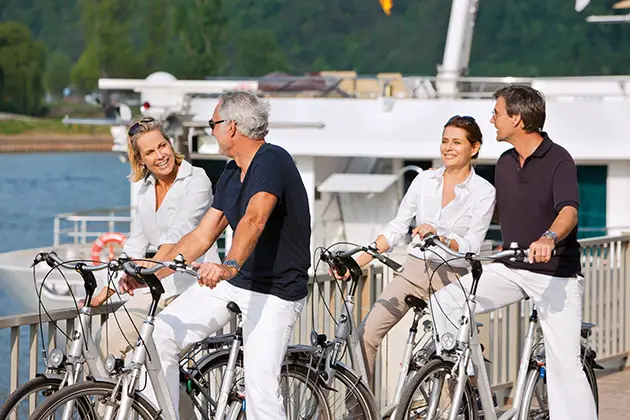
You decide how much you want to do
One of our friends from New Jersey took two European river cruises with her 88-year old mother. There was only one instance, she explained, when her mother chose to stay on the bus. “Otherwise, she was able to keep up with everyone just fine. No one is hurrying you and you go at your own pace.”
Shipmates will be kindred souls of a kind

Are River Cruises for You? A Few of the Benefits author writes “the people I met onboard were active and curious travelers, no matter how old they were. No one was content to just sit in a chair all day and watch the world float by. And luckily they didn’t have to. So regardless of our age, almost all of the 189 passengers on board my ship were very similar to me in travel style.”
Let’s talk about safety
This may seem like an odd point to make but let’s face it—accidents aboard cruise ships make the news. No one wants their vacation to end like that. River cruise lines have been strengthening their safety measures by, for example, requiring everyone to use an access card to board the ship. Other safety measures are common sense. Ask your ship’s crew how they have been trained to react and respond as necessary to any situation should they be needed.
Accidents can occur when docking so be mindful at those times. Admiralty law governs river travel, as well as the laws of the country(ies) in which you are traveling. Read the agreement you sign with the cruise line very carefully. Everyone has a different threshold of risk. Each of us must measure the possibility of risk versus the incredible rewards of travel. Most experienced river cruisers would agree that it is “a safe and enriching vacation choice, not to mention always a great value.”
Now back to the fun stuff: The food is excellent
Chefs on river cruises prepare meals for the number of people who would typically fill a restaurant in the evening. They can get fresh, local fare every day when they stop in a town or city. Much of the food is served buffet style. It is carefully prepared and reflects local culinary selections.
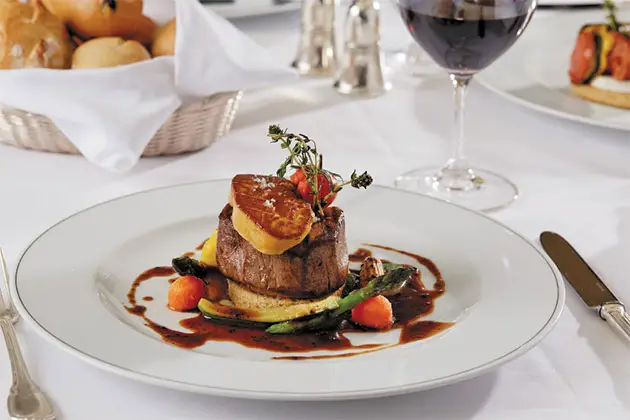
Consider this opinion from Cruise Critic: “Meals start with an amuse bouche—one night, a simple presentation of fresh mussels was superb—and moves on to hors d’oeuvres, such as marinated artichoke with cream cheese salad or mushroom risotto. There’s always a soup, usually one with Hungarian, Austrian or German roots in a nod to the Danube itinerary, followed by a choice of main courses (fish and meat options). Dessert also offers a choice; there’s always a fruit offering and a rather sparse cheese plate in addition to sweets. At the gala farewell dinner, it came as a surprise when wait staff paraded around the dining room with baked Alaska. (We thought that seafaring tradition was limited to big ships.) It turned out to be the best baked Alaska ever.”
Entertainment is low key
Most people in our age group will be tired after a full day of tours so evening entertainment tends not to be a big priority. “Our experience was that most people went to bed around 10:30,” said our New Yorker. “After a full day of walking and tours lined up for the next day, most people just want to turn in after dinner.”
One ship has a string quartet in the evening; another the choice of a keyboard player and dancing or some local entertainment. All very low key. Do you prefer Cirque de Soleil-style extravaganzas with noise and lights as you down umbrella cocktails into the wee hours? If so, the night-time tranquility of a river cruise is probably not for you.
What should I wear?
One of the most appealing aspects of a river cruise is that you unpack once when you arrive, and repack only when you leave. Still, there are considerations. You’ll need to consider the season and destination, and whether it is expected to be cold (Danube Christmas market cruise), hot (the Mekong), or somewhere in between (the Seine in June). You will spend your days exploring towns and villages, so dress appropriately for the destination (more chic for Paris, casual for Heidelberg). Some ships will have a formal dinner night. Given the limited space in your stateroom, however, you probably won’t be packing your ballgown.
Packing needn’t be complicated
Avalon advises, “Don’t expect to get all decked out for dinner on a river cruise, but some cruisers like to spruce up their attire for the evening. Using the color-coordinated wardrobe you’ve packed for daytime, sprinkle in some fun pieces – scarves, shawls, jewelry, stylish shoes. It will eliminate the need to pack separate evening wardrobe but still put an appropriate spin on your daytime attire.”
The author of A Dangerous Business Travel Blog itemized what she packed for a river cruise on the Danube; Packing Tips For A River Cruise on the website 1000traveltips.com is another good place to get more advice.
River levels change with the seasons and can change your experience
Some of the conditions that can affect river cruises are high water levels, low water levels, wind and fog. When excessive rain raises water levels, riverboats might not be able to sail certain stretches of rivers. They may no longer can fit under bridges or flooding has made it unsafe for the ship to moor. Low water levels can be a problem as well. There might not be enough water to float a ship without it grounding. In Europe, low water levels are typically due to a drought. They are most common at the end of a hot, dry summer, usually around late September to mid-October. High water levels typically occur in the spring when mountain snows melt.
You can download the River Cruise Info app or you can visit their website to check on water levels. The beauty of river cruises is that you can be bussed to your next location if the waters temporarily become impassable. All cruise lines know what to do in these situations. And, it’s important to remember that impassable waters are the exception, not the rule.
What if I plan the same trip by land?
If you plan your own trip along the same route as a river cruise, you probably will pay much less than what you would spend on the cruise. But you also will need to spend the time (hours) scouring over guidebooks, searching out a rental car, (getting lost), and finding hotels and restaurants that meet your budget. With a river cruise you will unpack only once (the ship is your hotel room) and you’ll go on sightseeing tours arranged down to the smallest detail. At the end of an active day, you will leisurely enjoy a gourmet meal in the company of others. It all depends on what kind of trip you’re looking for.
* * *
You may also like
- Chartres, Amiens, Reims: Three unforgettable day trips from Paris
- Hidden gardens, the perfect croissant, Edith Piaf: Books for exploring Paris by foot and all the senses
- The reinvention of Mary Pochez and the birth of La Vie du Chateau
Go to the Blue Hare home page for more articles for fabulous women.
Header photo courtesy of Uniworld Boutique River Cruise Collection.
